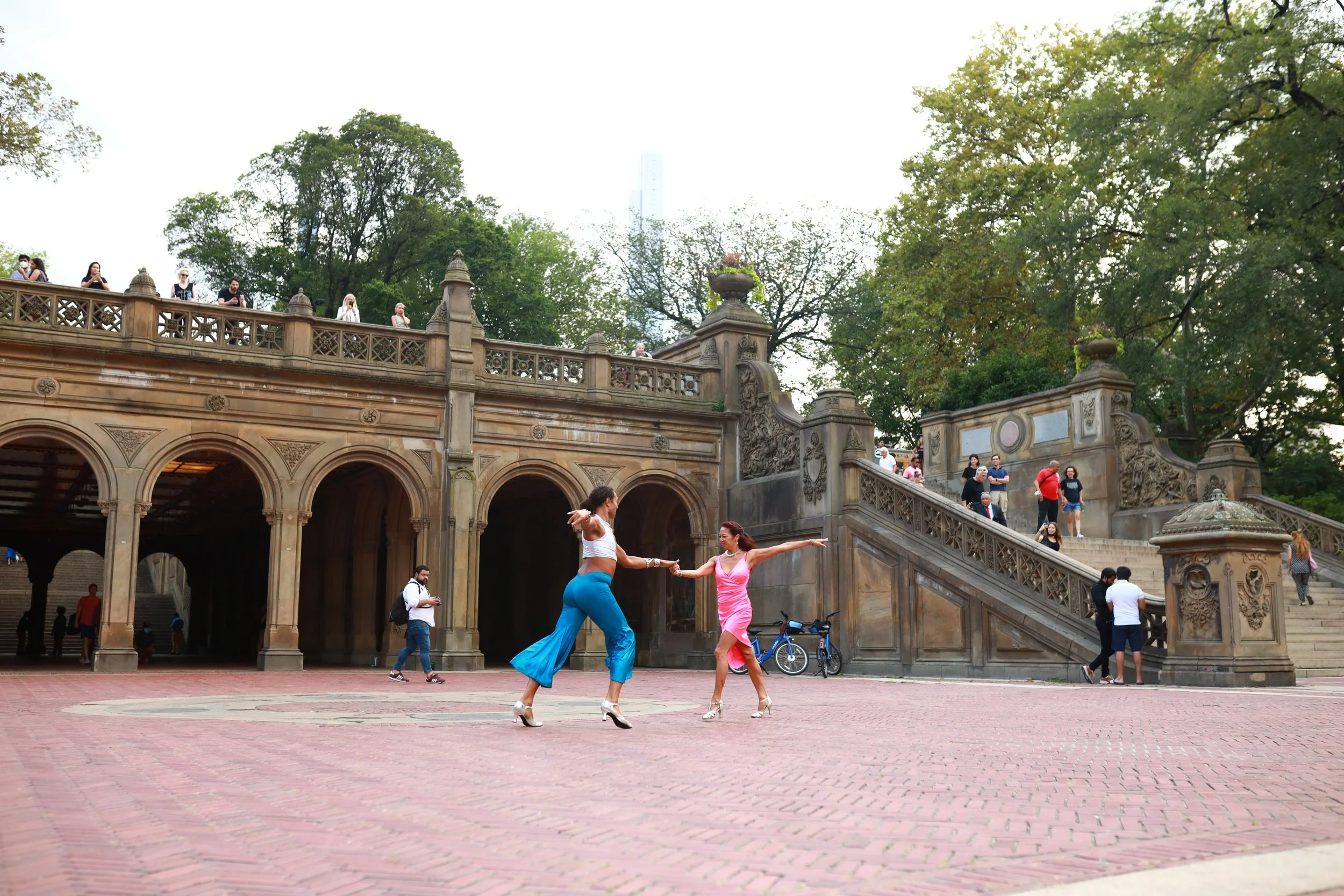Oral Histories
Dance is Life wouldn’t be here today without the legacy of Latin Hustle in New York City, and the history of it being danced in Central Park—right where Dance Is Life began nearly 50 years later. Many of the dancers who will happily take you for a spin, danced in that same spot, decades ago as teenagers in the 1970s.
The Tradition of Latin Hustle in
NYC’s Public Spaces
From parks to basements and recreation centers, the roots of Latin Hustle formed in the public spaces of New York City, where anyone of any age or background could join, and do it for free. Here, “OG” dancer Sal Rentas shares where he danced when he was too young for the nightclubs, including basements, parks, and recreation centers, including one at his grandma’s church, the Church of Blessed Sacrament.
The Co-Existence of
Latin Hustle + Hip Hop
Another “OG” dancer you’ll see at Dance Is Life, is artist David Husney. He is an expert in the history of Latin Hustle because he lived (and danced) it himself. Here, David describes the relationship between Latin Hustle and Hip Hop, both serving as an escape from gang violence in urban safe spaces, like St. Mary’s Church. David describes that for many of the original dancers, like Willie Estrada and Billy Fajardo, Hustle was life.
The Legacy of Latin Hustle
at Central Park
The “spinning top” of Latin Hustle, Peter Rodrigues, is known for his immaculate spins. Like many of the “OG” dancers who join us today, Peter discovered Latin Hustle as a teen and hasn’t stopped spinning since. Here, he describes the scene of Central Park in the 1970s, where Dance Is Life would launch nearly 50 years later.

